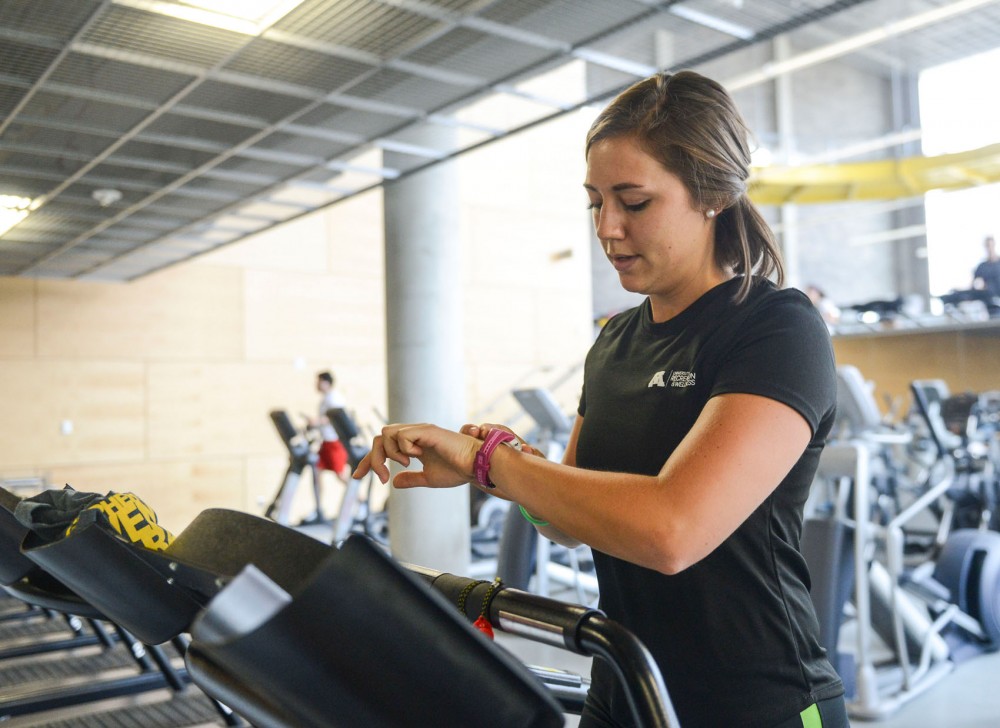The University of Minnesota is trying out a new way to get its students and employees to exercise.
This upcoming school year, the University’s recreation center will use fitness hardware like wristbands and heart rate monitors as part of a push to get the campus community active and participating in schoolwide physical activity challenges.
“If anything, [a fitness device] guilts you into moving,” said Laura Kozlowski, group fitness coordinator at the rec center.
Some popular fitness bands are able to sync up to a wellness account through the University. Last year, the school began a pilot version of Healthy U Interactive, an online tool that several colleges around the country use to facilitate fitness challenges and competitions.
Because of its success last year, the University will continue to use the account to engage the campus community with fitness challenges, said Brad Hunt, director of marketing and communications for University Recreation and Wellness.
The account allows University members to log their physical activity, nutrition and water intake, as well as receive fitness and nutrition tips.
While Healthy U Interactive provides a platform for campuswide competition, Hunt said, it can also be used as a fitness and nutrition log for people who want to track their daily health habits. Those without fitness hardware can also use the online tool by manually entering their information.
Seth Trulen, a sports management student who graduated this spring, said he used Healthy U Interactive while participating in the University’s fitness challenge last winter.
“It got people active,” he said. “It kept people accountable.”
Trulen said he uses a fitness band as a barometer for his activity throughout the day, and it has motivated him to become more active.
Kinesiology senior Alyssa Melco said the fitness trackers are popular at the rec center. She’s currently using a heart rate monitor watch, which measures the intensity of her workouts, to prepare for a half-marathon this fall.
Kozlowski also uses an exercise tracker and said she’s seen an increase in the fitness bands both on and off campus.
She said the fitness bands can be helpful for all types of people, ranging from the most active to those whose exercise extends to only a short walk around the block.
Kozlowski said the devices are a good encouragement to get people moving, but she warned that they can be misleading. Because the trackers can measure movement, but not the intensity of the movement, she said, they can potentially overestimate calories burned during the day, leading some to overeat.
“It’s all a formula,” she said. “Physically, [it’s] no real science.”
While they are not a comprehensive measure of physical activity, the fitness bands and health account are tools that can make getting healthy more fun, Kozlowski said.
“It’s to get people active doing things that they enjoy,” she said.


